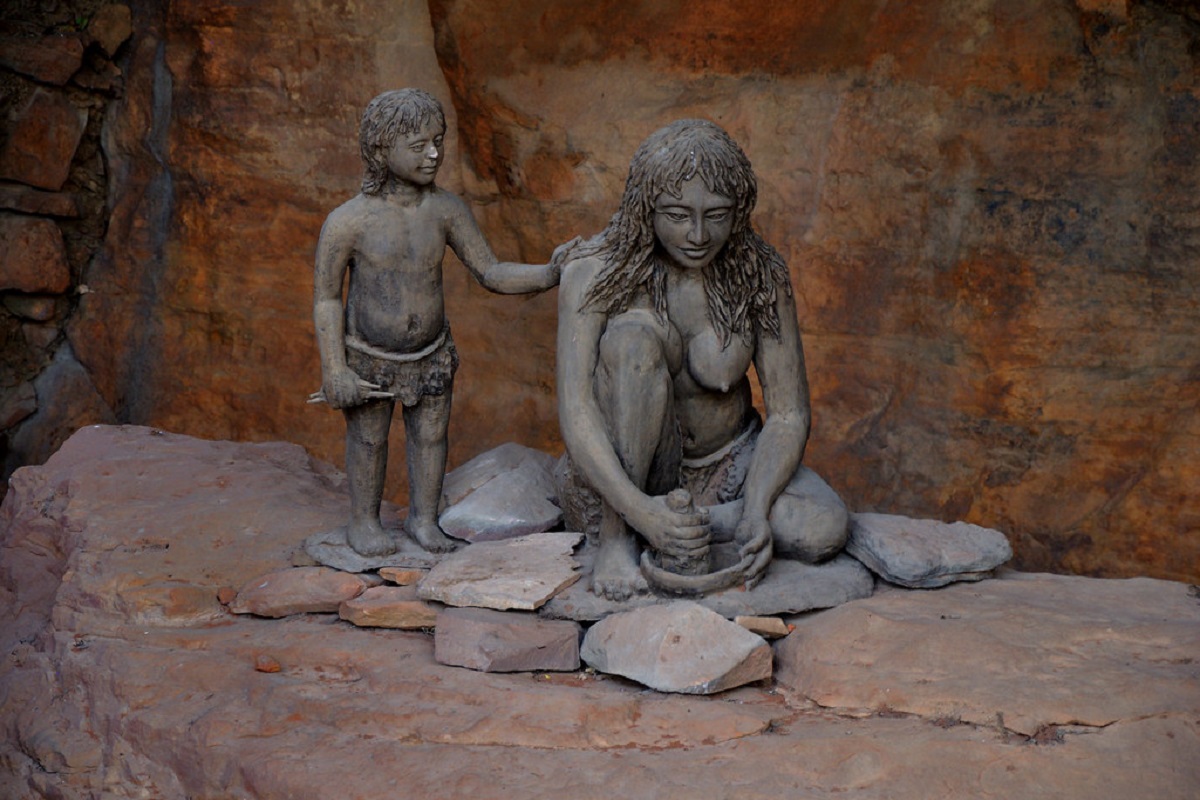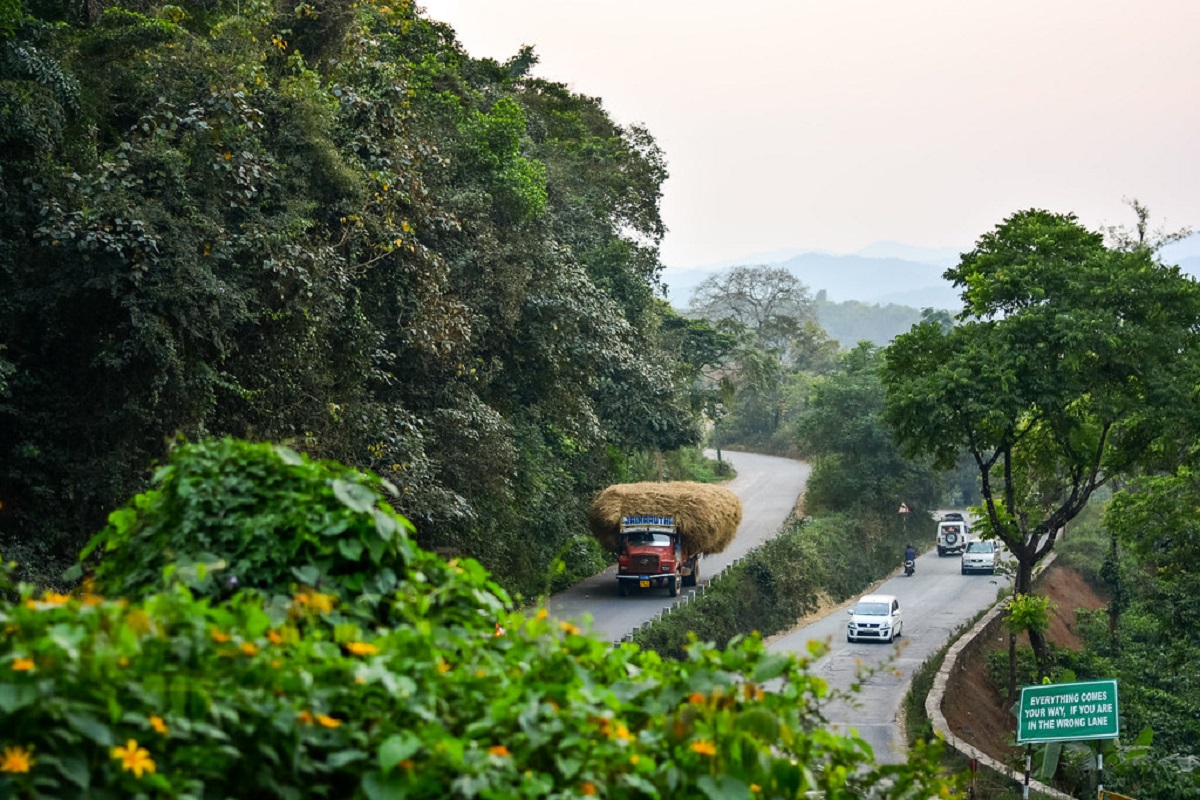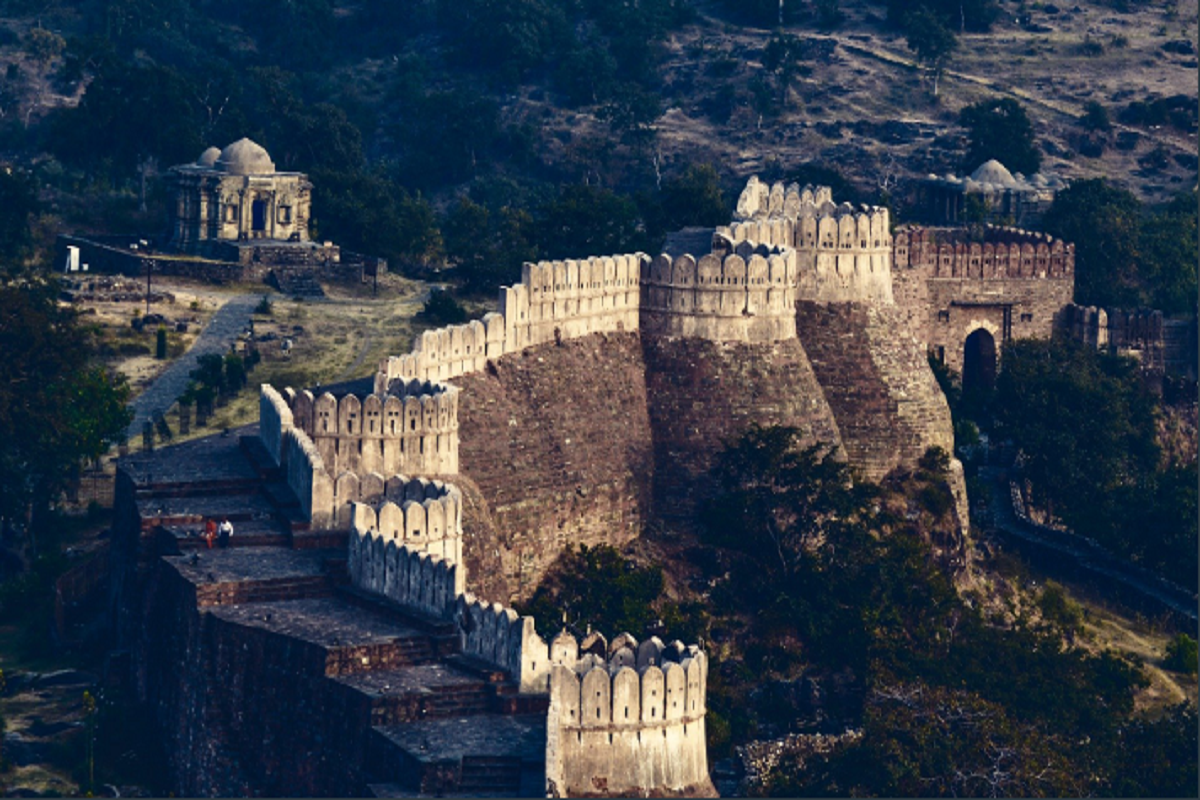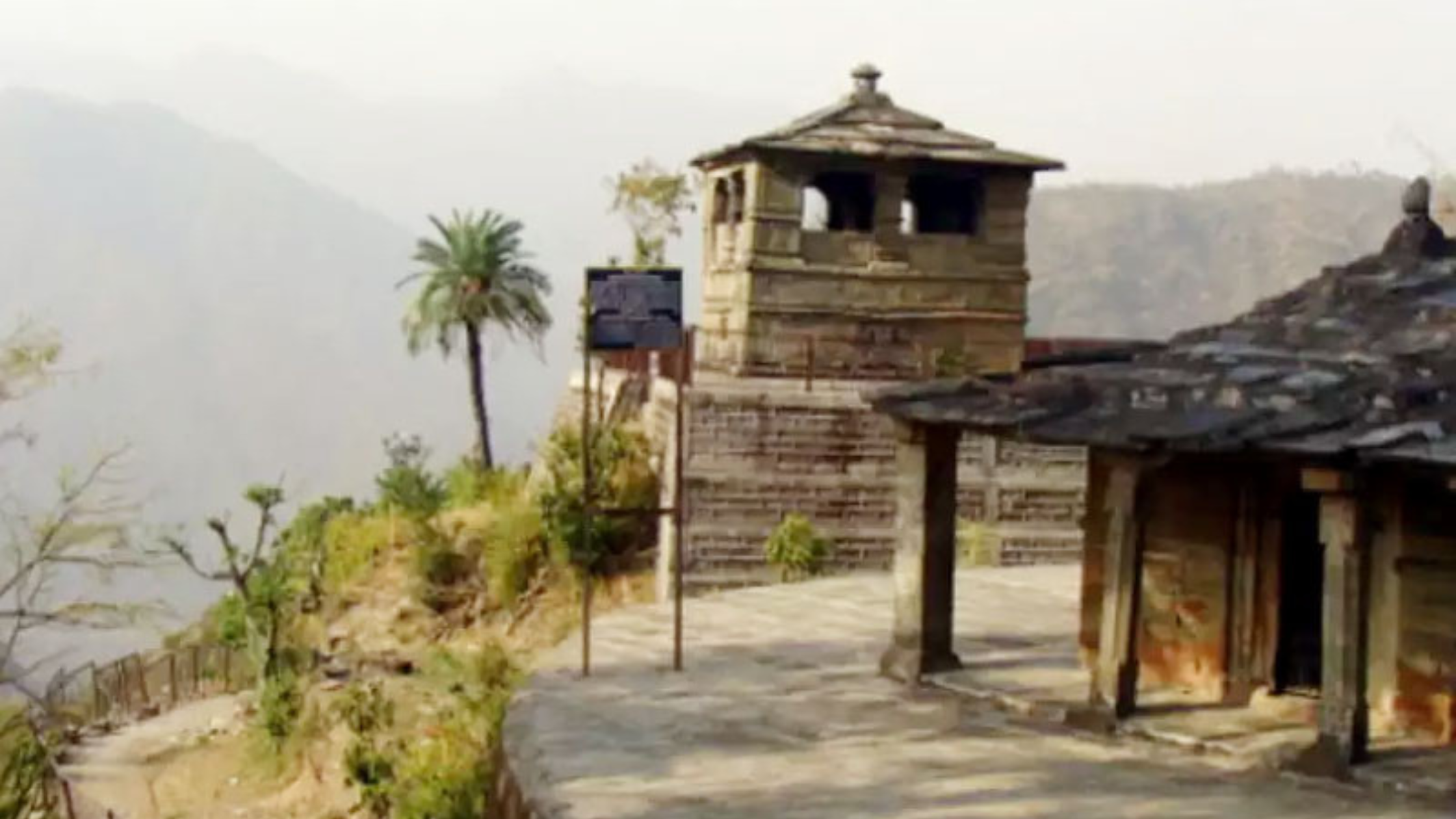In the Labyrinth of archaeological sites, prehistoric and historic remnants of the early ages of India the Bhimbetka Rock Shelters will always have an eminence off its own. Located in the Raisen District in Madhya Pradesh India these rock shelter gives us a glimpse into the Prehistoric ages of the paleolithic and the Mesolithic era of Indian history. The Bhimbetka Rock shelter points out at the earliest existence of human races in India and truly corroborates the presence of the Stone Age which began in India during the Acheulian time. The Bhimbetka Rock Shelters consists of seven hills and has more than 750 shelter distributed across an area of 10 kilometer. Historical data clearly point out and the fact that these shelters were inhabited by humans nearly 100,000 years ago.
The Encyclopedia Britannica explains that these rock shelters provide a few glimpse into the human evolution from gatherers and hunters to that of agricultural settlements. These shelters have been declared as the UNESCO World Heritage site. These caves are also particularly popular for the prehistoric cave paintings that can be dated back as more than 10,000 years old, belonging to 8000 BCE. These cave paintings depicts images such as hunting, dancing and different forms of animal. Bhimbetka site is an evidence that supports the existence of rock art in India from the very prehistoric times
Bhimbetka Caves Built by
The Bhimbetka Caves what discovered by Vishnu Sridhar Wakankar. Apart from finding the caves he is also famous for finding the traces of river Saraswati which otherwise was considered nothing more than a myth by the historians. Wakankar had discovered nearly 700 odd rock shelter which were spread across and area of 10 km in Bhimbetka caves. They had painting which the scientist said were more than 30,000 years ago and belong to the paleolithic age. In the year 1970 was declared as UNESCO World Heritage site.
The discovery of the Bhimbetka cave has a special importance when the earliest civilizations in India are being traced. The Bhimbetka painting shows images of elephants, boars, cattle, deer and snake. The evidences found in Bhimbetka in a way support our folklore, myth and stories related to religion. It can be said that Wakankar has made an undying contribution to Indian archaeology through the discovery of the Bhimbetka Rock Shelters.
Bhimbetka Timings
The Bhimbetka caves are open all round the week. You can visit them on any day of the week including the weekends. These rock shelters are open even on national holidays. If you wish to check out the Bhimbetka Rock Shelters in their minutest details you must visit the place in broad daylight. The caves open for visitors and tourists from morning 7 o’clock and remains open till evening 6 o’clock. However ensure that you are there during the broad daylight hours so that you can experience the ambiance and checkout the paintings with complete clarity.
Bhimbetka Cave Paintings Information
The Bhimbetka cave is located 45 km from Bhopal and is at a distance of 9 from Obedullaganj in the district of Raisen in Madhya Pradesh. The rock shelters are located in the southern edge of the famous Vindhya Range. To the south of these rock shelters there is the Sapura Hills. The site of bhimbetka cave paintings images has Seven Hills the Bhonrawali, Vinayak, Bhimbetka, Jhondra, Lakha Juar east and west and Muni Baba ki Pahadi.
Bhimbetka Location & How to Reach
The Bhimbetka caves also known as bhimbetka is located in the present day very well connected to the adjoining regions and cities through a wonderful and smooth network of roads and highways. Regular buses ply to and fro the city of Bhimbetka, where the buses are both privately operated as well as government owned. The Madhya Pradesh Road Transport Corporation has a fairly large number of buses running on this route. However the town of Bhimbetka location does not have any direct rail or flight connectivity.
The Raja Bhoj airport in Bhopal happens to be the nearest airports to the rock shelters. This airport is well connected through flights with cities like Delhi, Mumbai, Indore and Kolkata etc. It is at a distance of 48 km from Bhimbetka. The Bhopal junction railway station happens to be the nearest railway from the Bhimbetka cave. It is located at a distance of 45 kilometers away from the Heritage site. Bhopal is just 46 kilometers away from Bhimbetka hence you can travel the distance very well through the roads and highways with the help of private taxis and bus services.
Entrance Fee for bhimbetka caves
The entrance fee to the Bhimbetka caves in Bhopal is rather nominal. The Indian tourist must be Rs. 10 entry fee where as tourist from foreign countries need to pay Rs. 100. If Indians are entering the place in a light motor vehicle the need to pay Rs. 50. Foreign tourists travelling by light motor vehicles must be Rs. 20. Minibuses for Indians will cost Rs. 100 whereas minibuses for foreign tourists will cost Rs. 400.
Important Structures in bhimbetka caves
When you are in the Bhimbetka caves you must check out the Auditorium cave for sure. Bhimbetka cave paintings information is one of the most significant features of The Heritage site. The Auditorium cave happens to be surrounded by quartzite towers which are clearly visible from long distance away. The Auditorium Rock happens to be the biggest shelter in the Bhimbetka complex. Robert Bednarek have described that this Prehistoric Auditorium cave did have a cathedral like ambience. It has gothic arches and high soaring space. The plan of the Auditorium cave resembles that of a right-angled cross where all the four branches are perfectly aligned to the four cardinal directions. It is on the eastern side of the cave that has the main entrance to the space. Where the Eastern passage ends is where you have the cave entrance. This happens to be a Boulder with a vertical like panel. This Boulder has been given the name of the Kings Rock or the Chief Rock which is however not really supported by any solid evidence. This Boulder is also considered to be an important feature to be found in the Bhimbetka complex.
The paintings in the Bhimbetka Rock Shelters are another elementary feature of the heritage site. The oldest of these paintings can be dated back to 10,000 years ago. You can also find several geometric figures which can be dated back to the mediaeval period. Vegetable colors have been used on these paintings which has stood the test of time since these drawings were carved deep inside the inner walls. The paintings, the drawings, the coloring patterns etc can be classified into seven different ages of period. The first one of them is the upper paleolithic period. The linear representation of the age attained much prominence. A lot of dark red and green has been used to color the figures of animals like tigers, bisons and rhinoceros. In the second period which is also named as the Mesolithic period the images were comparatively smaller in their size. The figures happen to be much more stylized and show decoration done on the body. During this time in addition to the animal paintings you can also find human figures indulging into scenes of hunting.
The bhimbetka caves images of the age shows use of weapons like pointed stick, barbed spears and bows and arrows etc. Some images of the era depicted a war kind of a situation between tribes. You can also find the depiction of communal dances, musical instruments, scenes of children and mother, man carrying dead animals, pregnant women, burial rituals, etc. The third period is known as the Chalcolithic period where the paintings are similar to the Mesolithic age. The paintings of this age show agricultural activities and communities and also the beginning of the barter system. Period 4 and 5 can be clustered together as the early historic age. The figures of this age have a decorative and schematic pattern and are mainly painted using the colors of yellow, white and red.
The bhimbetka cave paintings images of this age depicts symbols of religion, uses of tunic like clothes, depiction of images like tree gods, yakshas, magical Sky chariots. The next phase are the final two periods of 6 and 7 clustered together as the medieval age. The paintings of this order represent geometric and schematic line. However the paintings of this era shows signs of crudeness and degeneration as compared to the earlier artistic style. The colors used were created by combining red hematite, manganese oxides and charcoal.
Best time to visit bhimbetka caves
Best time to visit the Bhimbetka cave during the winter season. The months from November to February happens to be the most favorable ones to visit and explore these Rock shelter. The temperature in Madhya Pradesh during these month happens to be rather moderate and comfortable. Remaining outdoors and exploring the caves, their paintings and other elemental features turns out to be rather enjoyable during this time.
History of bhimbetka caves
The site of Bhimbetka cave has made considerable contributions for historical significance of India. With the excavation of these caves the ancient prehistoric traces of evolution of human Civilization in India attained a new and clear face. Historians with these new findings could establish stronger theories regarding the most ancient human settlements in Central India.
Attractions nearby bhimbetka caves
There are several other tourist attractions near the Bhimbetka Rock Shelters. Once you’re in the area do not forget to visit places like Bhojeshwar Temple, Ratapani wildlife sanctuary, Ginnorgarh Fort, Bhojpur Temple, Budni Ghat, Keri ke mahadev, Digambar Jain Atishay Kshetra.







